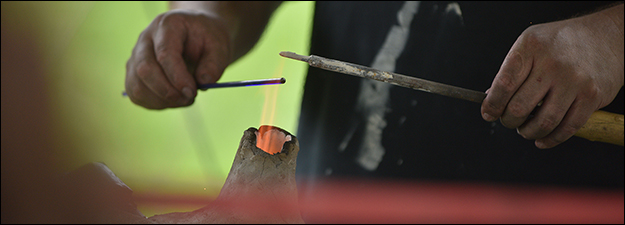Visualizing Medieval Connections: Network Analysis and Digital Mapping II
Sponsoring Organization(s)
Alabama Medieval Studies (ALMS)
Organizer Name
Kate M. Craig, Leanne Good
Organizer Affiliation
Auburn Univ., Univ. of South Alabama
Presider Name
Leanne Good
Paper Title 1
Commodity Flows: Combining Least Cost Path and Network Analysis Techniques for Modeling Early Medieval Trade Relations in East Central Europe
Presenter 1 Name
Donat Wehner
Presenter 1 Affiliation
Christian-Albrechts-Univ. zu Kiel
Paper Title 2
Exploring Economic Networks in the Medieval Peloponnese, Greece (Eleventh-Twelfth Centuries)
Presenter 2 Name
Katerina Ragkou
Presenter 2 Affiliation
Univ. zu Köln
Paper Title 3
Grassroots Heresy: Towards Social Mapping of German Waldensian Communities, 1390-1400
Presenter 3 Name
Eugene Smelyansky
Presenter 3 Affiliation
St. Thomas Univ.
Start Date
14-5-2016 3:30 PM
Session Location
Schneider 1130
Description
This session highlights emerging perspectives on what it meant to be connected in the Middle Ages, and how those connections shaped spatial and social identities. What moved in the medieval world (ideas, objects, people, stories, technology)? How did different rhythms of motion and patterns of circulation intersect with one another? How can medieval connections be visualized and represented, and what new impressions of the medieval world might we form by focusing on movement and interaction rather than stasis? The papers engage the methodological question of how to bring new digital approaches, such as social network analysis and digital mapping, to bear on this research.
Leanne Good
Visualizing Medieval Connections: Network Analysis and Digital Mapping II
Schneider 1130
This session highlights emerging perspectives on what it meant to be connected in the Middle Ages, and how those connections shaped spatial and social identities. What moved in the medieval world (ideas, objects, people, stories, technology)? How did different rhythms of motion and patterns of circulation intersect with one another? How can medieval connections be visualized and represented, and what new impressions of the medieval world might we form by focusing on movement and interaction rather than stasis? The papers engage the methodological question of how to bring new digital approaches, such as social network analysis and digital mapping, to bear on this research.
Leanne Good

